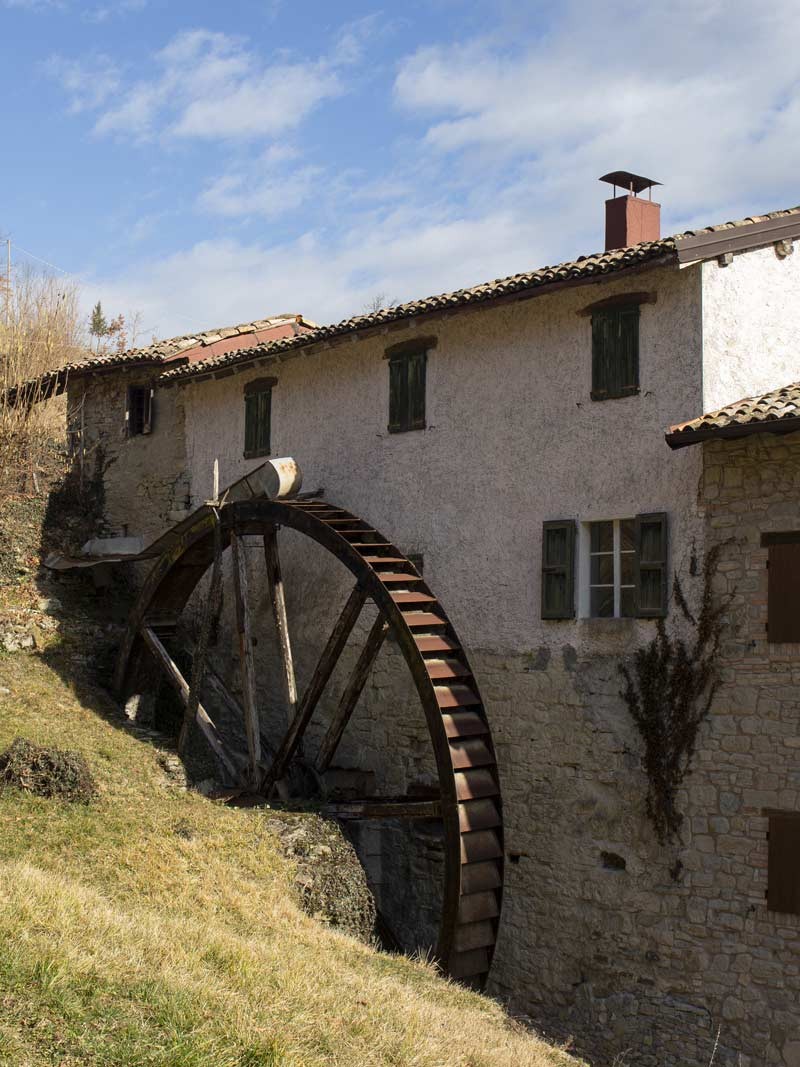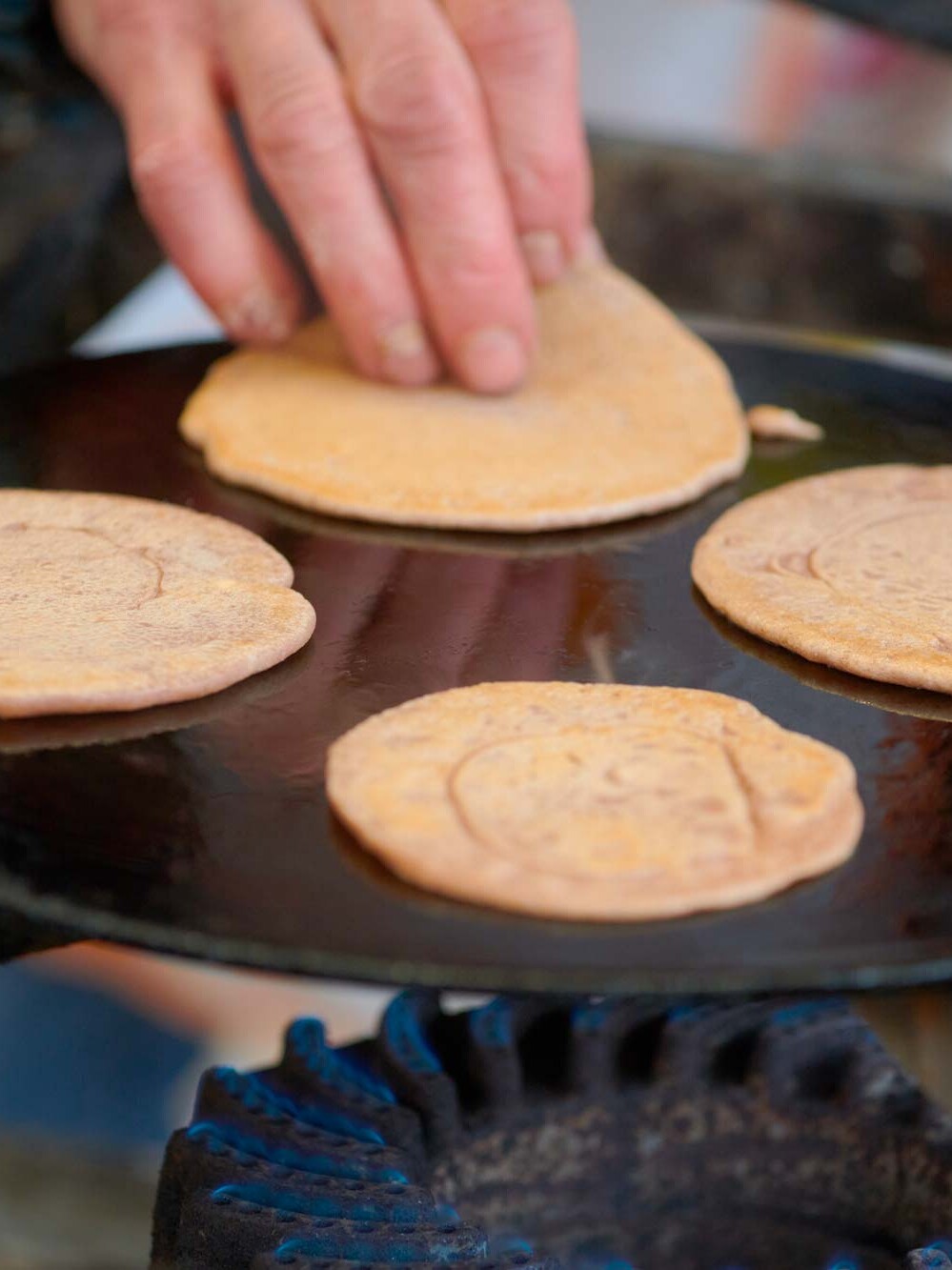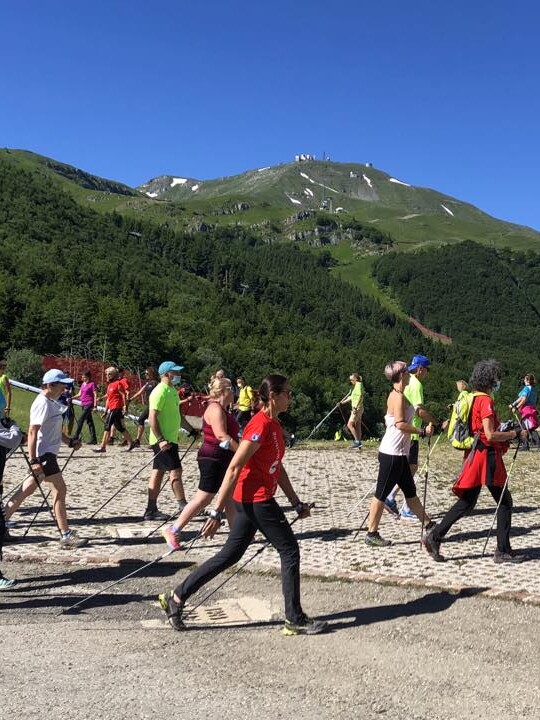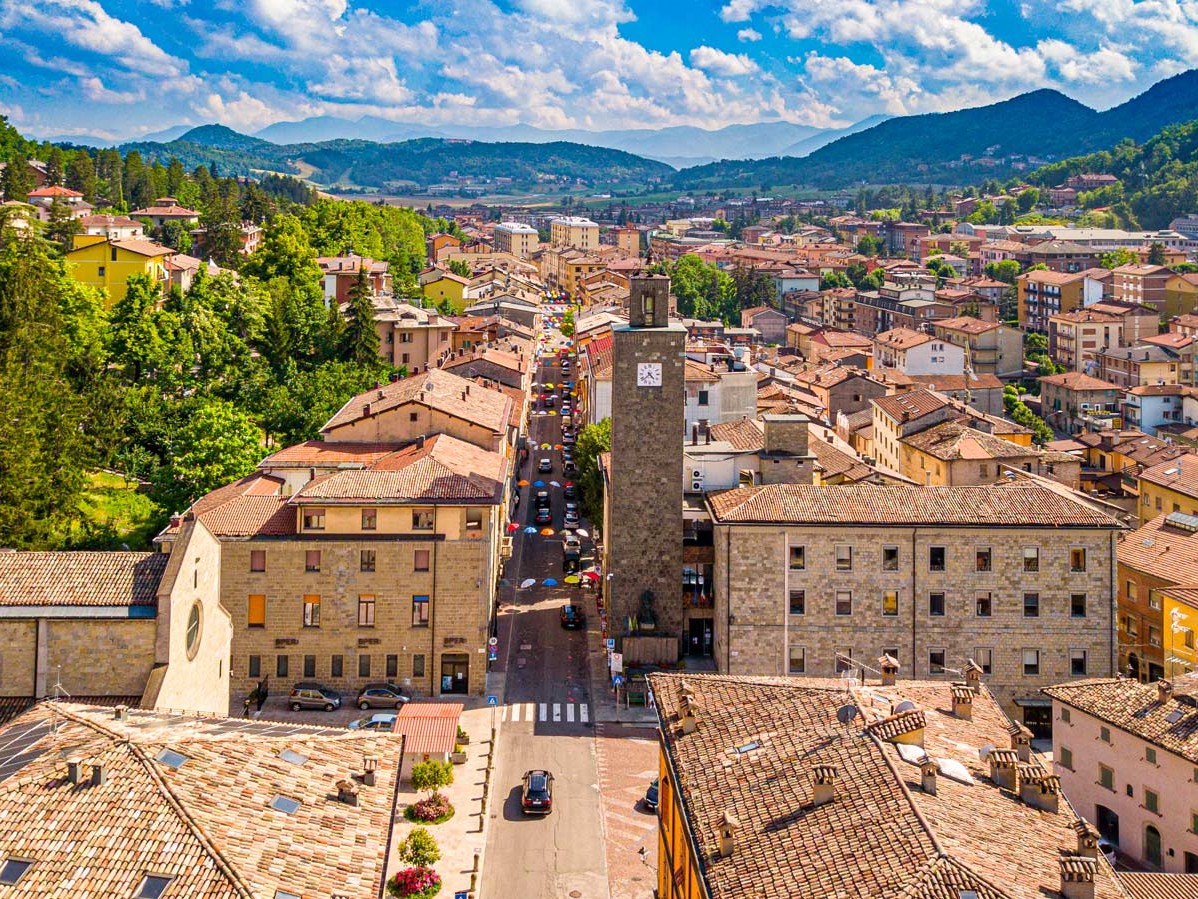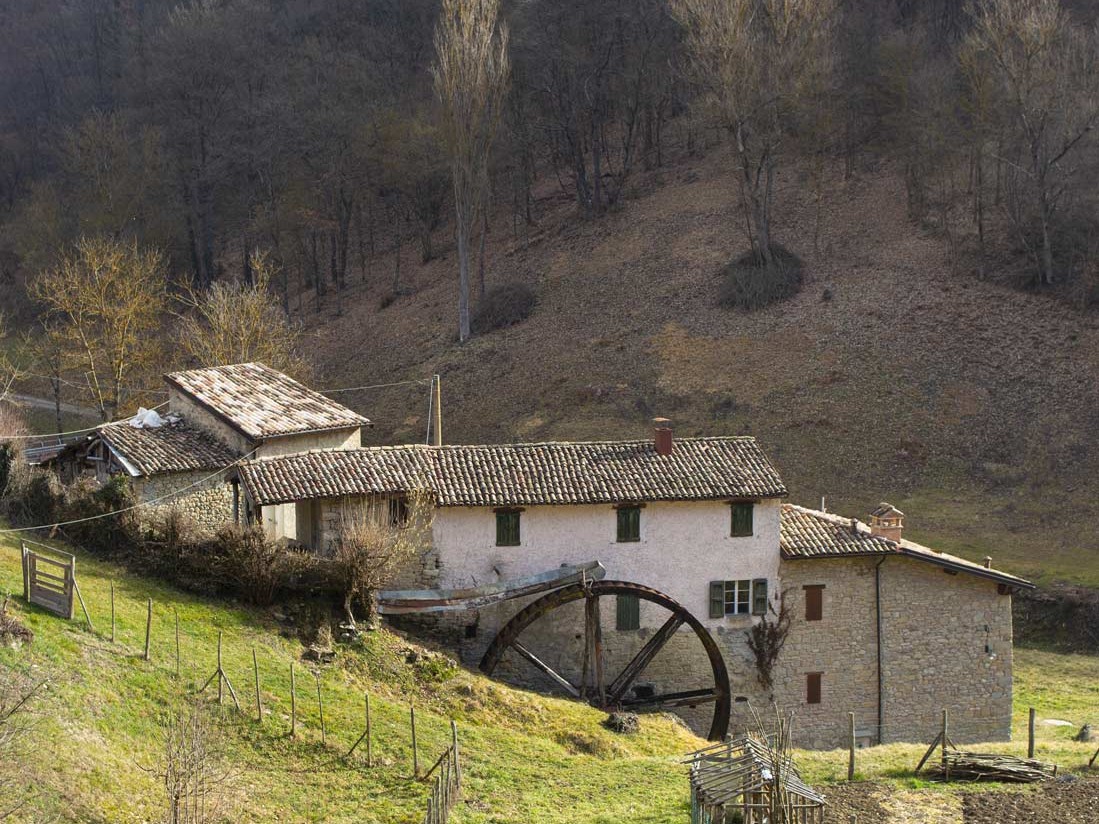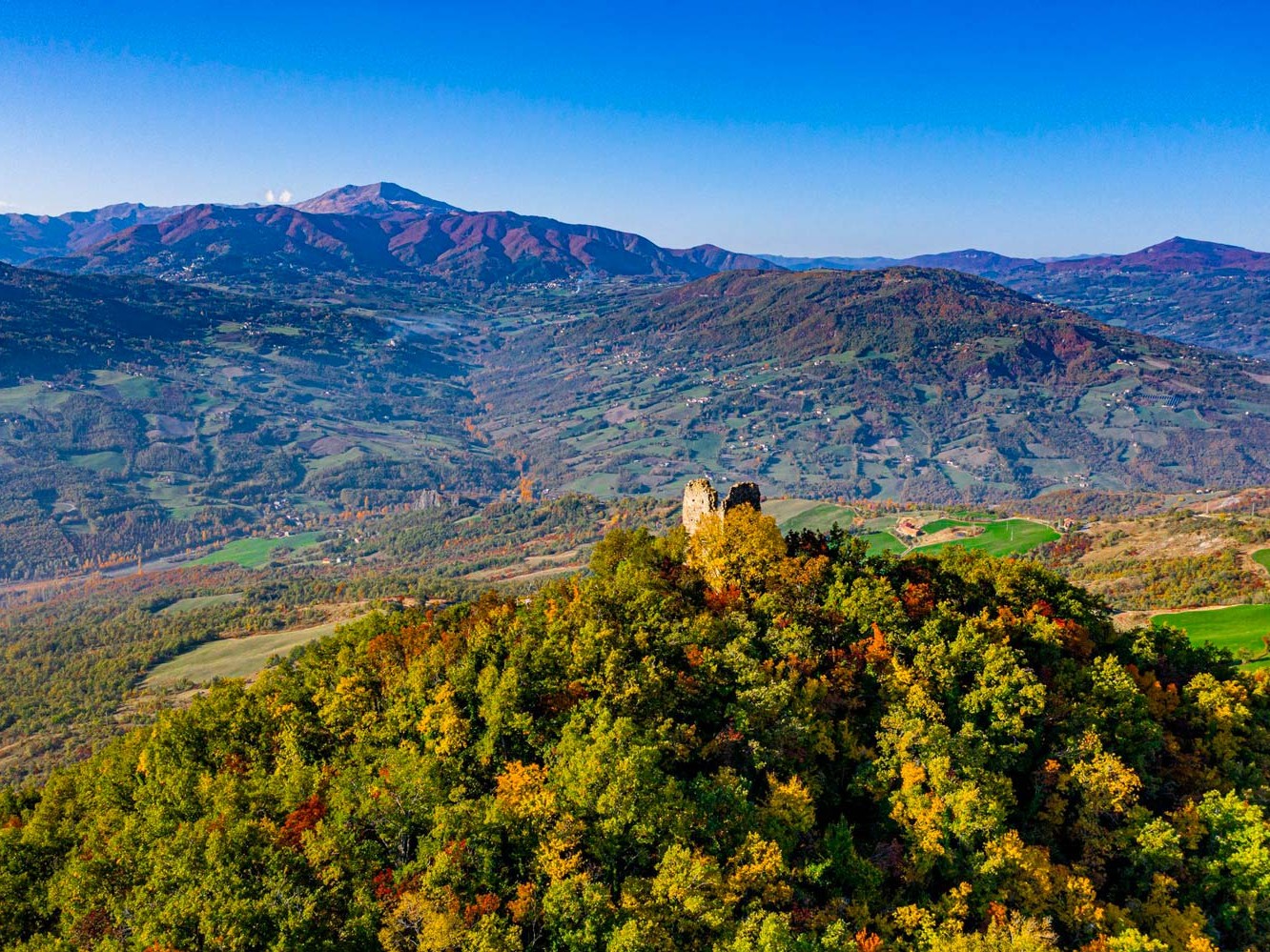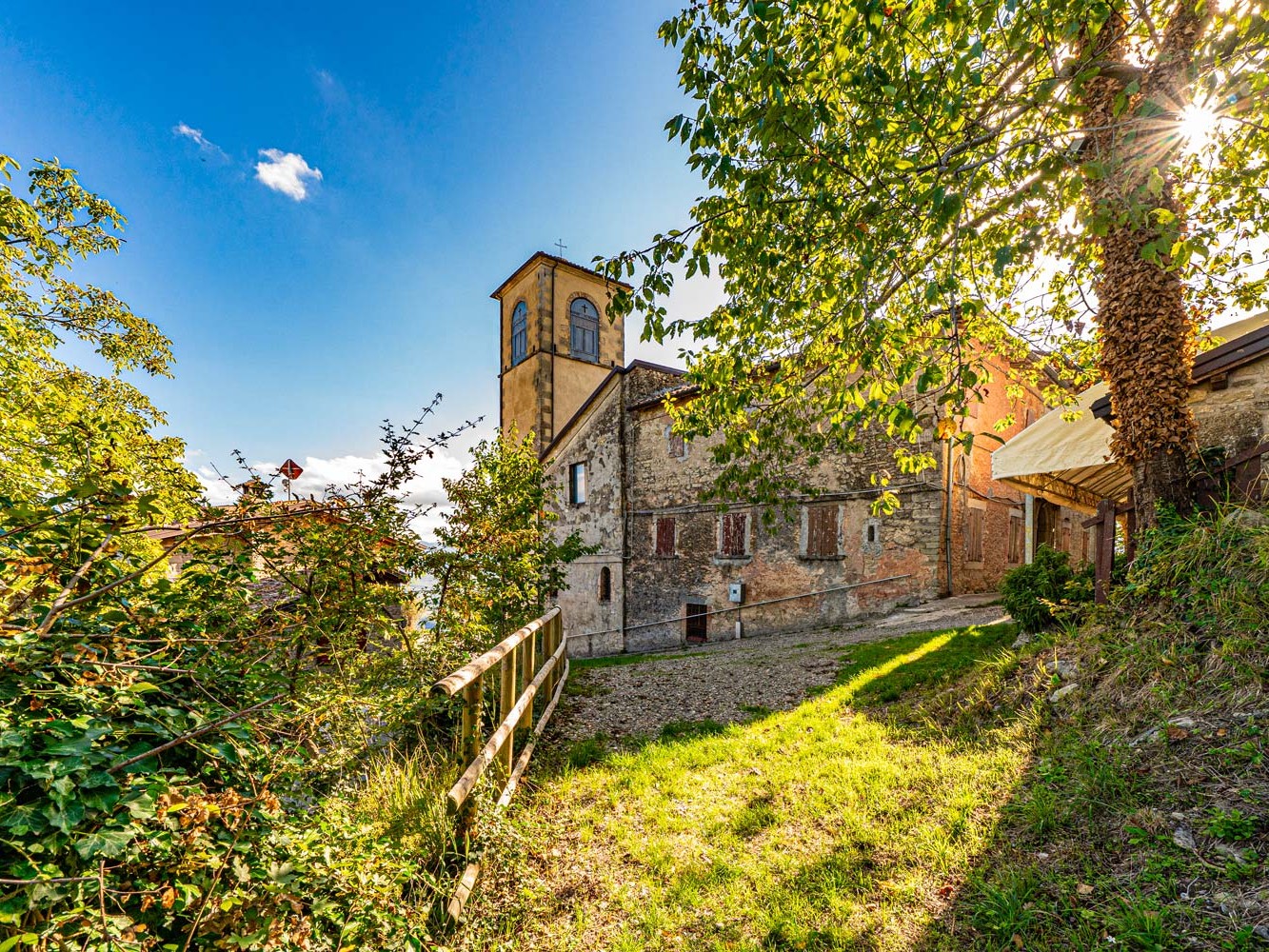Info
Visit Pavullo Welcome Room - Via Giardini, 3 41026 Pavullo nel Frignano (Modena) - Italia
visitpavullo@comune.pavullo-nel-frignano.mo.it
Location
Pavullo nel Frignano, the main town in the area of Frignano, has a population of over 17,000 and covers an area of 144.11 square kilometres, with over 18 outlying hamlets and districts.
It is located in the Frignano mountain district at an altitude of 686 metres, and is easily reached from Modena via the ‘Nuova Estense’ road.
When to go
The best time to visit Pavullo is in summer, from June to September, when you can enjoy the mild temperatures and take refuge from the heat in the town’s many green, shady areas.
However, it also offers colours and views in the autumn, winter and spring which should not be missed by nature lovers in search of peace and quiet.
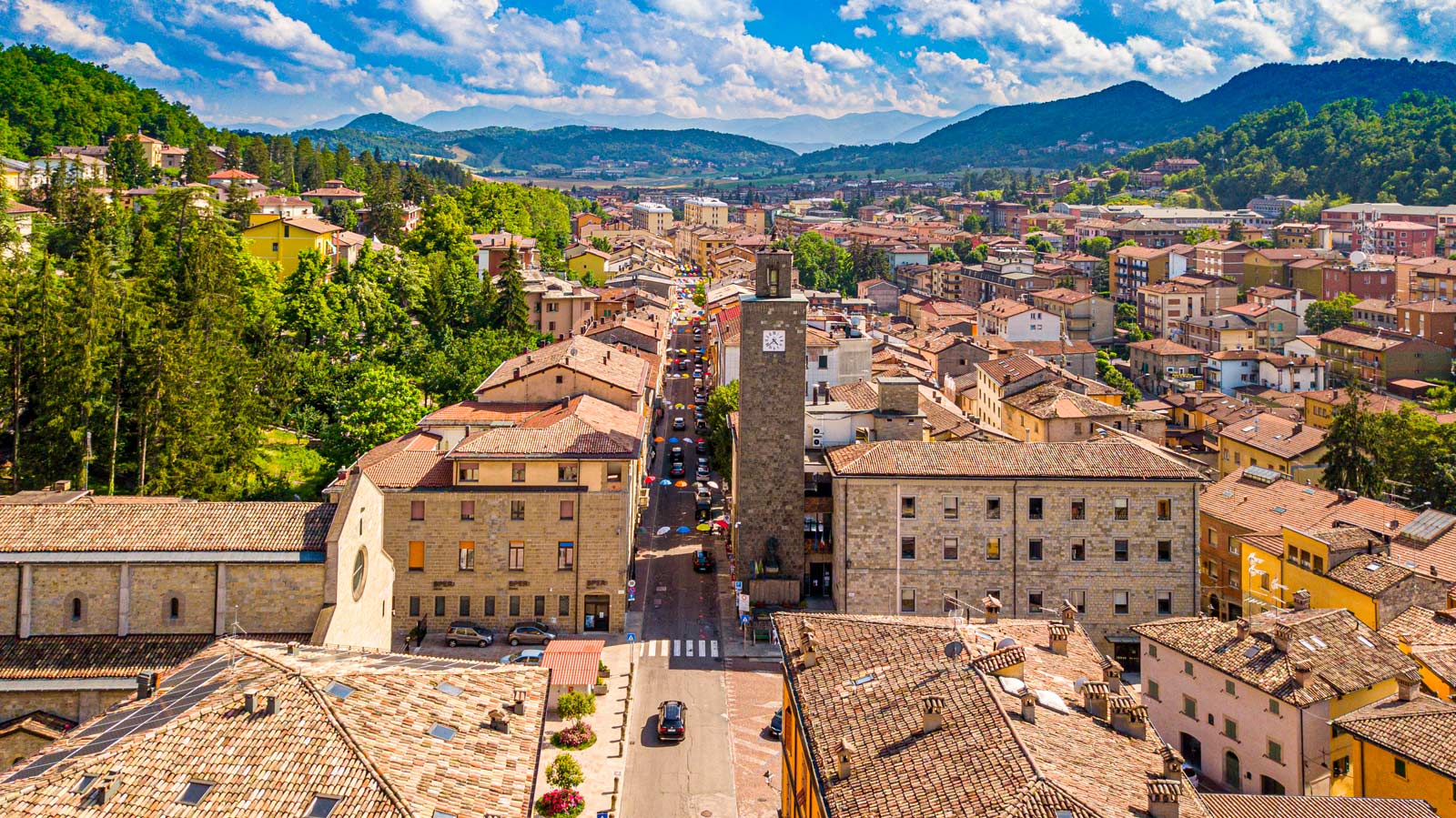
What to eat
Crescentine (local flatbreads), borlenghi (traditional pancakes), mushrooms, chestnuts, charcuterie and cheeses such as Parmigiano-Reggiano or ricotta.
Entertainment
The aerodrome is home to a gliding school with winch launch, the only one of its kind in Italy, and a flying school.
Running in a circle around the edges of the aerodrome there is a well-equipped wellness trail, equipped with night lighting so as to enjoy this magnificent green basin 365 days a year.
The outdoor swimming pool, surrounded by a large pine forest.
The Civic Galleries of Palazzo Ducale, which host contemporary art exhibitions and cultural events.
The Arts Factory, an art education workshop where laboratories are organised for school students of all ages, as well as eco-art workshops for adults, and projects and training courses for professionals and teachers.
The Mac Mazzieri Cinema-Theatre, a cinema of particular importance for the area, which is also home to theatrical performances and activities.
The G. Santini Municipal Library, a welcoming place that offers various public services, promotes reading, and organises cultural and leisure initiatives for adults and children, as well as guided tours for schools of all levels.
Keeping fit
Tennis Centre, Public Swimming Pool, Cross-country ski track, Public Stadium with athletics track, hiking trails, mountain bike trails and paths taking in the main historic and natural attractions in the area, many within the Sassoguidano Nature Reserve.
Events
June: Mountain Economy Fair (every two years)
24th August: St. Bartholomew’s Fair
October: Chestnut Festival
Every Saturday: Weekly street market
Every Tuesday from May to October: Farmers and organic market
First Sunday of the month: Antiques and flea market
Every Tuesday in July and August: Evening street market
Surrounding area
The Municipality of Pavullo is made up of the main town itself, and 21 outlying suburbs and hamlets.
Benedello, Camatta, Castagneto, Coscogno, Crocette, Frassineti, Gaiato, Iddiano, Niviano, Miceno, Montebonello, Montorso, Monzone, Olina, Renno, Sassoguidano, Verica
Examples of civil architecture can be seen in the outlying hamlets, such as Montecuccolo Castle, home to important art collections by Pavullo artists Covili and Biolchini, as well as a natural history museum displaying collections of minerals, herbs, plants and animals from the Frignano area.
There are numerous medieval towers, such as Lavacchio, Torricella, Gaiato, Semese, Montorso and Vie Cave, standing on the surrounding hills and providing important traces of a complex defensive system.
Monteobizzo is home to the beautiful Romanesque apse of the ancient Parish Church of Saint Vincent and Anastasius.
Other examples of religious architecture include the Romanesque parish churches of Renno, Verica and Coscogno.
All the churches in the area preserve precious traces of religious life, such as the 15th-century frescoes in Montebonello, the portal of the parish church of Coscogno, the statues in Verica attributed to Begarelli, the stone altarpiece in Monzone and the striking church of Sassoguidano.
Nelle frazioni si trovano esempi di architettura civile come il Castello di Montecuccolo, sede di importanti collezioni d’arte degli artisti pavullesi Covili e Biolchini e di un museo naturalistico che mostra raccolte di minerali, erbe, piante ed animali del territorio del Frignano.
Sui colli circostanti si elevano numerose torri medievali, importanti tracce di un complesso sitema difensiovo, come quella di Lavacchio, Torricella, Gaiato, Semese, Montorso e Vie Cave.
A Monteobizzo si trova la bellissima abside romanica, dell’antica Pieve dei Santi Vincenzo e Anastasio.
Altre testimonianze dell’architettura religiosa riguardano le pievi romaniche di Renno, Verica e Coscogno.
Tutte le chiese del territorio conservano preziose tracce di fede e devozione, con ad esempio gli affreschi quattrocenteschi di Montebonello, il portale della pieve di Coscogno, le statue di Verica attribuite al Begarelli, l’ancona di pietra di Monzone e la suggestiva chiesa di Sassoguidano.
Position
Art & Culture
Nothing found.
Frazioni
Nothing found.
Itineraries
Nothing found.
Appennines4Kids
Nothing found.



